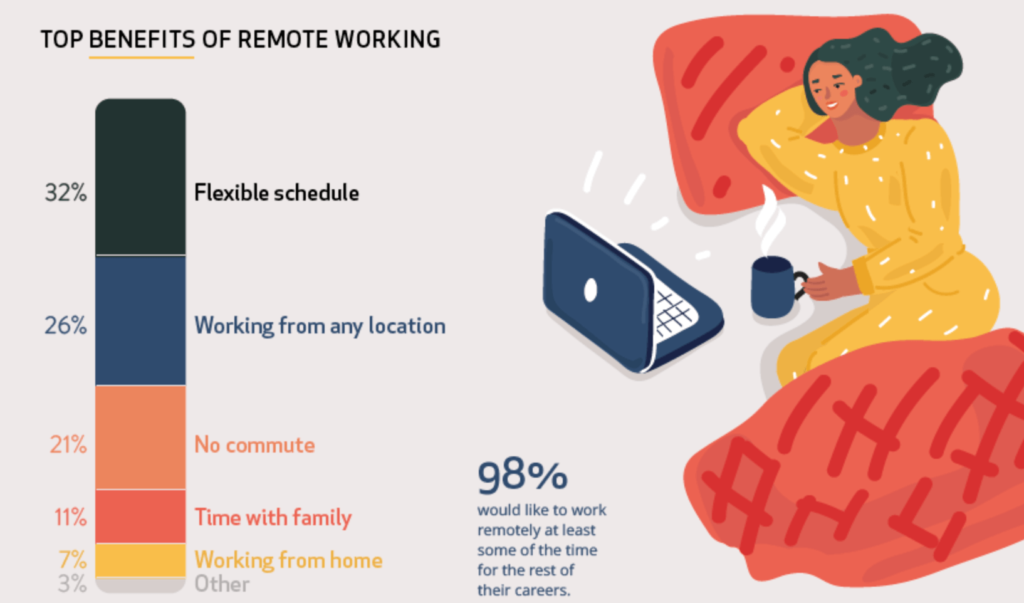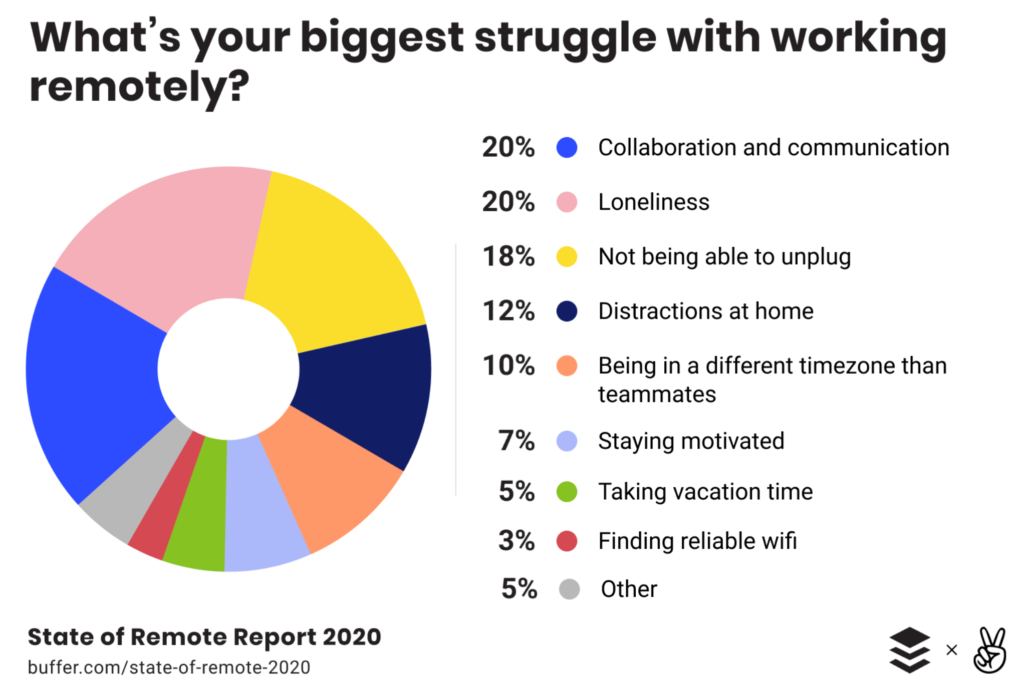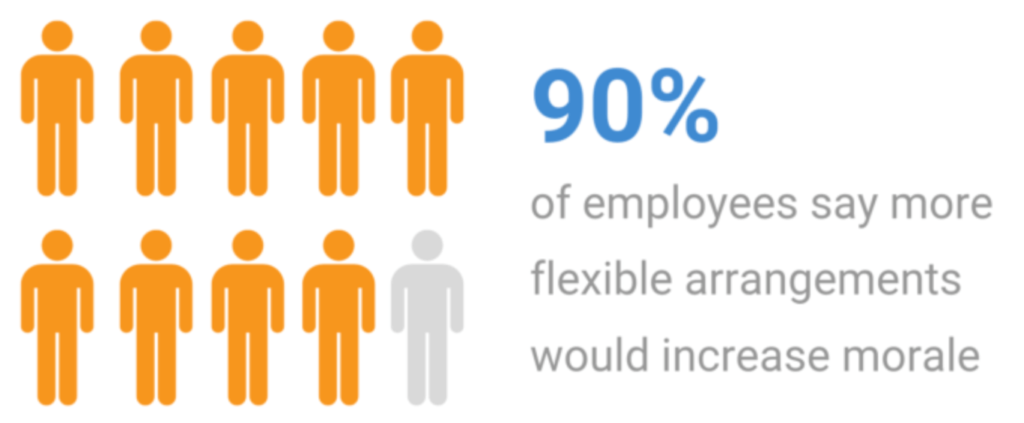
In the wake of the Covid-19 outbreak, businesses have to face multiple challenges. According to the World Economic Forum, the virus outbreak caused negative blowing effects on the US economy, which can only be managed with effective policy changes.
The US gross domestic product (GDP) declined at a 32.9% annual rate which is reportedly the deepest fell after 1947.
To survive this period, a lot of small and large businesses have turned instantly to new market routes, and one of them is sending employees back to their homes and continue office operations remotely.
Business owners are increasingly showing interest in learning remote work trends that are reshaping a new future.
Even those businesses that are working fine in this pandemic situation are adopting the remote working approach and finding online jobs because people have started accepting that work from home isn’t only the future – it’s the present.
Eight ways technology Reshapes A Remote Future For Business World
The power of the internet is so strong that we are no longer confined physically to our homes. The ability to connect globally can surely help businesses grow and succeed.
Let’s find out how the business landscape is changing with the rise in technologies.
1. Remote Working Is Gaining Popularity
The stats on remote working is enthralling. A number of studies have been carried out over the past years that suggested a significant upward trend in the quantity of Americans working remotely.
Between 2005 and 2017, the number of individuals working from home in the US has escalated by 159% (according to FlexJobs and Global Workplace Analytics).
Here are some other important statistics telling us the current state of remote working.
- Remote work rise by 7.9% between 2016 and 2017.
- The growth rate for remote work is 44% over the last 5 years.
- Work from home has grown by 91% over the past decade.
- Almost 3.5% of the workforce in the US are telecommuters.
Here are some more stats!

An important factor contributing to this upward trend is the growing acceptance among the masses for telecommuting because of its immense benefits.
More importantly, it enables people to work especially those with some kind of physical disability or personal responsibilities that stops them from working for a traditional employer.
2. Allow Companies To Save More
Literally, the reasons to promote remote working are plentiful. But the biggest benefit is that it can save companies a lot of money.
What evidence do we have about this?
1. According to Global Workplace Analytics, 6 out of 10 employers cite cost savings as the biggest benefit of working remotely.
2. With empty workstations, no lunchtime gatherings, companies can save their operational costs which eats a major chunk of their revenues every month. Companies don’t need to pay for rent and utilities, food, taxes, and cleaning services.
3. Apart from this, working in a virtual environment lets organizations experience less absenteeism and lower turnover. A Gallup study finds out that telecommuters are 3 times more engaged than on-site employees, and this led to employee loyalty and less turnover.
4. Another study by CoSo Cloud shows that individuals working remotely are 52% less likely to take an off when they are ill as compared to other employees working in a regular workplace with their teams. You must be wondering why?
The answer is simple and straightforward. Smaller tasks like forwarding important information with the team, attending calls, replying to emails are easily manageable at home.
Another reason is that employees don’t want things to pile up and prefer to get things done as soon as possible.
3. Makes Employee Management Easy
When businesses allow their employees to work remotely, the biggest hurdle they face is related to communication and collaboration (State of Remote Work 2020). However, in the current technological world, these communication challenges can be easily navigated.

Today businesses have the ability to control and monitor their remote team, which is an added factor for appreciating a remote business environment.
With the availability of better and secure VPM remote tools for messaging and project management like Trello, Slack, Microsoft Teams, Dropbox, ProofHub, etc., remote work arrangement becomes easier.
These apps come with a lot of great features. From initiating text-based conversations to making a video call and from tracking individual work progress to checking the status of ongoing projects, these apps have made things easier for managers.
4. Work From Home Makes People Productive
The debate about whether telecommuters are more productive than people working in work-at-home companies is still inconclusive. But, there are multiple tools that can help you decide.
Time Doctor
- It’s an employee time tracking software used to monitor tasks and prevent wastage of time.
- The app takes a screenshot of the PC screen every 3 minutes as a way to ensure that employees are working.
WorkiQ
- It is an easy to use real-time automatic time tracking software that identifies unproductive behaviors of employees and provider ‘in-the-moment’ coaching.
- Let managers identify top performers so their processes will be shared with the teams.
Todoist
- A time management software that let managers create their to-do-list and prioritize the team’s task and projects.
- Managers can assign tasks, share important files, give and take feedback, and track progress through a single platform.
Asana
- With powerful project management software, the Asana reporting team’s progress has become easy.
- It allows managers to build customized workflows, and with ‘Harvest Timer’ you can track how much time is spent by employees on each task.
People work more efficiently while being at home. Here’s how:
a) No unnecessary gossips
A lot of business professionals believe that meetings and office discussions can be a time suck and utilize precious resources. Even if the agenda is very important to discuss, trying to coordinate with people from other departments and gather them into one venue cause delays.
b) 0% distractions
More than 70% of employees say that they feel distracted in the office environment, while 16% report that they don’t feel focused (Survey by Udemy, 2018).

Workplace interruptions are a major reason that causes annual losses of $600 million for US businesses. Loss of productivity due to distractions and drama makes a workday longer, and sometimes people have to sit late to complete their assigned tasks.
This causes employee burnout and frustration and can lead to a lack of engagement.
With the telecommuting policy in place, employees can pick a personalized workspace in their home, which is quiet and peaceful.
c) Minimal office politics
Organizational politics is still a thing even if your employees are working from home. However, a study focusing on political processes in cyberspace asserted that the level of politics diminishes as offices moved to a virtual world. In fact, remote working offers an opportunity to readjust relationships.
All of these factors improve the productivity and efficiency of employees by giving them more autonomy and freedom of their work.
5. Technology Comes With High Work Flexibility
Working in a virtual business environment means you have the flexibility to choose when and where you work. That’s quite appealing, right?
While working flexibility is a huge factor directly associated with work-life balance, it also gives employees the opportunity to pursue other important things in life. Whether it is your child’s annual school event or you wanting to enroll in a short marketing course, telecommuting allows you to do things you want without taking a whole day off.
Asana, Basecamp, Wrike, and Slack are some of the most amazing tools to assign team tasks. The best thing is that once the assignment is completed by the employee, the apps automatically update the field. So, you don’t need to take follow-up multiple times a day.
What evidence tells us about this?

Flexible work arrangements are also a contributing factor for higher employee morale and job satisfaction. It nurtures self-determination among employees and makes them accountable for their work.
6. Zero Commuting benefit For Employees
With the high cost of fuel, public transportation fares, traffic, and environmental pollution, it is totally inefficient and expensive for people to travel just to hold meetings.
As per the findings of Adecco Group, every office is going person can save 52 minutes on average by not commuting to work. In the US alone, excluding daily commuting can save up to 89 million hours of workers in a single week.
There are many online collaboration tools available which you can use to interact with your teams. The best example I have in my mind right now is Zoom, a video conferencing app.
As the pandemic hit the globe, the Zoom customer base has grown insanely. You can conduct virtual meetings with 65 people. The fun feature is a gallery view which allows you to see everyone on the board, and for a moment you feel that everyone is together.
7. Better Physical and Mental Health
The mental health benefits of telecommuting are still unrecognized. Workplace situations can cause and intensify mental health problems, but a healthy work environment can also support mental and physical health.
There are multiple apps that you can use to track and manage the health of your employees.
TalkSpace: It is an online platform that provides therapy to employees who need it. The process includes a brief assessment, choosing a therapist, and start communication.
Better Help: Many businesses have subsidized subscription to this app. It offers counseling services to people with psychological issues and works stress.
Insight Timer: It is basically a meditation app that helps people with managing sleep, stress, and anxiety.
Employees working in the traditional essay writing service companies are more likely to get sick than people working from home. Given the current Covid pandemic, workers are more prone to catching diseases. Contrary to this, when people work remotely, they’ll experience 91% improved work-life balance and 78% less stress (Owl Labs).
And if your employees get ill while working from home, they can play Coin Master and recover fast.
This is pretty understandable. When employees work in their own comfortable environment without any worries, work-related stress automatically decreases.
With respect to the current Covid situation, telecommuting gives employees the peace of mind that they are safe and can prevent the life-threatening disease
8. Remote Work Is Safe For The Environment
The remote working policy is actually an environmentally friendly policy. When people are at home, they act more responsibly. For example, I’ll be more hesitant to switch on the lights if I get perfect lighting by just opening my room window.
In their Open Work Program, Sun Microsystems report that the 24000 US employee participants avoided generating 32000 metric tons of carbon dioxide by not or less commuting. The same study also found out that commuting is responsible for more than 98% of the total carbon footprint of each employee.
However, powering office facilities and equipment produce less than 1.7% of greenhouse gas emissions.
It’s a great feeling for both employees and employers that by just working remotely, they are actually doing something great for the mother earth.
Conclusion
Technology has been recognized as a major factor in driving remote-working trends.
There are still many organizations that are hesitant to embrace this change, but many offices have adopted technological tools and announced that they would carry out their operations remotely until a vaccine is introduced in the market.
Therefore, it is a good idea for organizations to start implementing technological systems and formulate strategies that would benefit their company. In fact, a remote business environment is a win-win situation for the employer, employee, and the environment.
Author Bio
Amanda Jerelyn is currently working as a Brand Manager at Dissertation Assistance, a trusted place for students to buy affordable assignment help. She is also a technology freak who loves to contribute her innovative ideas and shares new invention and business practices on various online platforms.
